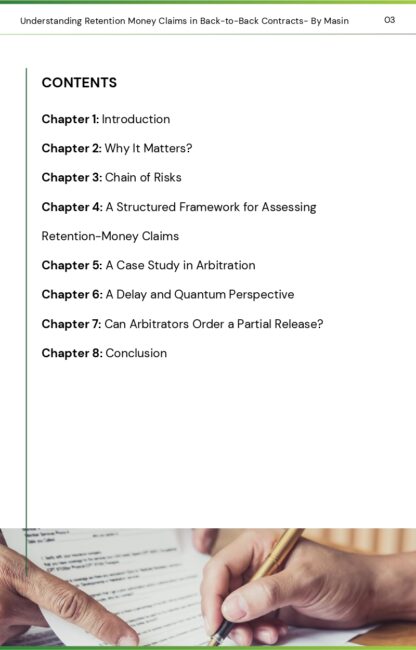
The Invisible Chains: Understanding Retention Money Claims in Back – to Back Contracts



Retention Money Claims in Back-to-Back Contracts
Retention money is meant to safeguard projects, but in back-to-back contracts, it often leads to disputes and cash flow challenges. This guide breaks down the risks and solutions with practical insights:
- Why retention money disputes are common in construction projects
- A structured framework for assessing claims
Frequently Asked Questions
Get answers to frequently asked questions about everything we do.
What is retention money in construction contracts?
Retention money is a portion (usually 5–10%) of the contract value withheld by the client as security to ensure project completion and defect rectification.
Why do disputes arise over retention money?
Disputes often occur due to project delays, unclear completion definitions, or lack of transparency in release conditions.
How do back-to-back contracts complicate retention claims?
Clause 20 applies to both claims and counterclaims unless explicitly excluded.
There’s a distinction between affirmative counterclaims (which seek independent relief and generally must follow Clause 20) and defensive counterclaims (which are more flexible).
Jurisdictions like India and UAE have evolving stances, shifting from rigid formality to nuanced procedural discretion.
Drafting clarity in Particular Conditions can significantly reduce future ambiguities.
Can arbitrators order partial release of retention money?
Yes, if substantial work is complete and defect-free, legal precedents show that arbitrators may allow proportionate release.
What steps can subcontractors take to protect their cash flow?
They can negotiate for a bank guarantee in place of cash retention, monitor certification timelines closely, and rely on forensic delay/quantum analysis to support claims.